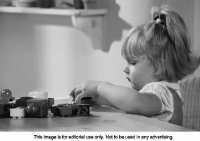Much of a young child’s life revolves around adapting to new situations. Even when a routine is established, things can change and new skills must be learned. From moving from bottle to cup, to giving up a pacifier, to no longer using diapers or training pants, young children must tackle a lot of transitions.
One such transition is making the switch from sleeping in a crib to sleeping in a bed. A crib can be a safe, comforting place for a child. But over time, the crib may no longer be the right place for the child to rest and this can manifest itself in a number of ways. For instance, a child may attempt to climb over the railing edge. When such behavior persists, most parents consider switching to a toddler bed, or a twin-sized bed with safety railings.
Not every child has the same feelings about a “big boy or girl” bed. Some are excited about the prospect while others feel a bit frightened. There are certain things a parent can do to make the process go more smoothly for all involved.
• Get talking. Before buying the bed, start talking about it with your child. Talk about how the new bed will be comfortable and exciting and how your child is no longer a baby. Go to the store and look at all of the beds available. If your toddler has an older sibling, let the youngster try out his or her older sibling’s bed.
• Childproof the room. Chances are your child already plays in his or her room, so it already may be full of safety features. To be on the super-safe side, however, give it another look and be sure all electrical outlets are sealed, top-heavy furniture is secured, and items that pose safety risks are removed.
• Repurpose a safety gate. Since your child will now have free reign to get out of bed when he or she desires, prevent middle-of-the-night roaming or leaving the house while you are sleeping; block the bedroom doorway with a gate. This will be for the child’s protection and give you peace of mind.
• Choose the right time.It’s best not to make a substantial change to your child’s sleeping environment when there are other major events going on. Moving to a new home or welcoming a new baby into the house can be stressful. Wait until later to move to the bed.
• Stick to the same pre-sleep routine. Children are creatures of habit and like to know what is coming next. Therefore, stick to the same routine around bedtime so that all will feel familiar. This may include reading a story, brushing teeth, putting on pajamas, straightening up the room, or singing a lullaby together.
• Choose the transition type that works for your family. Some parents choose to leave the crib up and slowly transition to the bed. For example, parents may let the child nap in the bed throughout the day and sleep in the crib at night. Still, some parents prefer the out-of-sight, out-of-mind method of taking apart the crib and making the bed the sole option for sleeping. Gauge your child’s reaction to the bed and select the option that you think will work. And remember, if the crib is still safe and comfortable for your child, there is no rush in switching to a bed. Just like other milestones in a kid’s life, this one is reached when the child is ready.
Parents should also avoid letting their children sleep in Mom and Dad’s bed. This promotes a habit that will be hard to break down the line. Although the first few nights of the new bed may be hard for your child, with time he or she will grow comfortable with his or her new sleeping arrangements.


